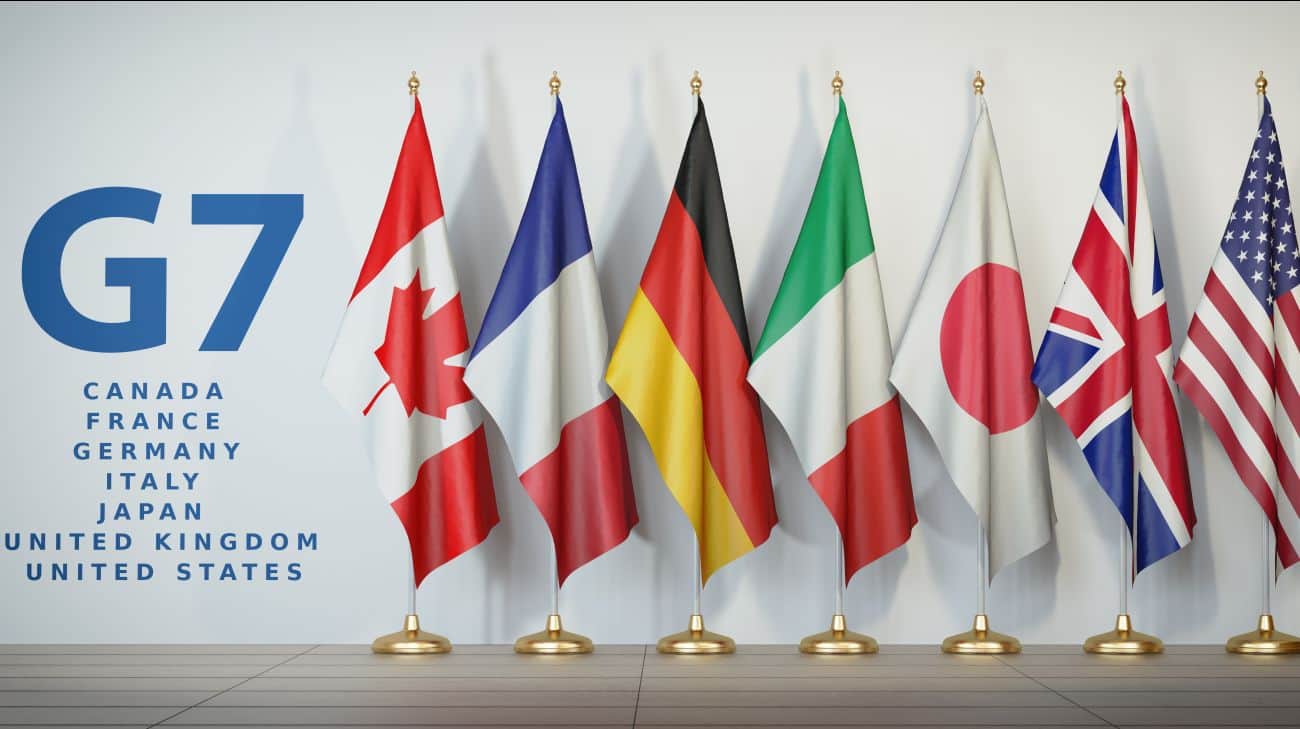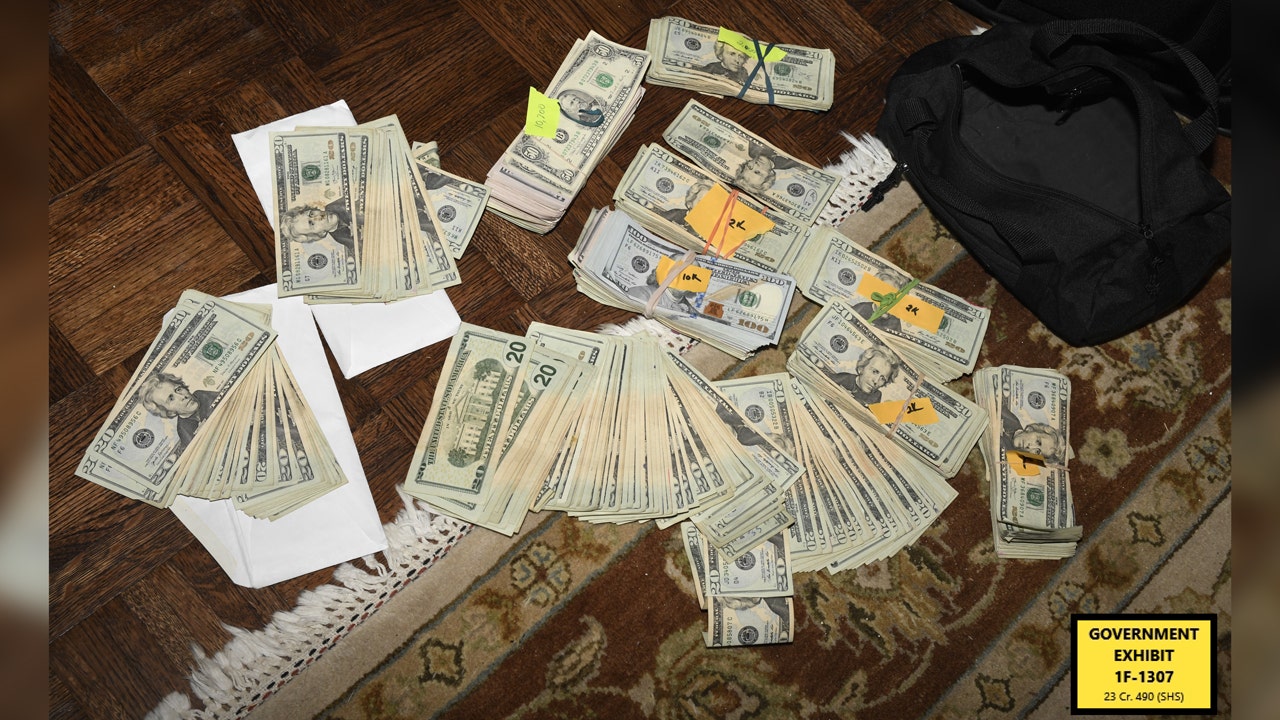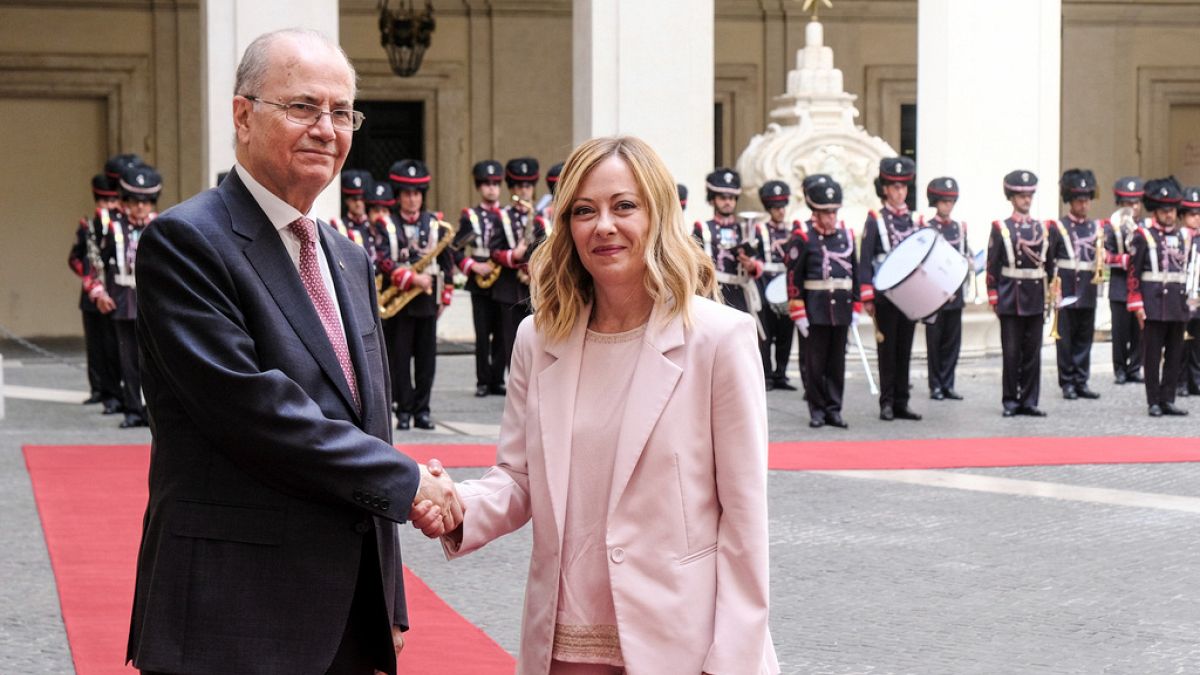Sports
An Eye on the Sky Fine-Tunes the Golf Tournament Below

PITTSFORD, N.Y. — Well before daybreak on Thursday, Stewart Williams joined an urgent discussion in a small second-floor room at Oak Hill Country Club, near the nation’s northern border. The night had brought cool temperatures, clear skies and gentle winds — and that was a problem.
Frost was thickening on the golf course and, less than two hours before the P.G.A. Championship’s scheduled start, the tournament’s top official needed to know when it would melt. For the moment, one of the world’s most prestigious golf tournaments would be shaped not by the athletic genius of a Rahm or a Koepka or a McIlroy, but by the instincts and data of a meteorologist from High Point, N.C., who barely plays the game.
By midmorning, with competition underway at last, Williams was thinking about the next hazard: a front that threatened to drench the course during Saturday’s third round.
“Nobody,” he mused in the sunlight, “was focused on the rain until the frost moved on.”
But there are few sports that focus on the weather like golf, and few that rely as much on meteorologists who travel to venues to assemble pinpoint forecasts. Local television stations and weather apps may offer forecasts for vast regions; specialists like Williams, who has spent the better part of three decades around golf courses, are building outlooks for areas of just a few square miles.
At a popular event like the P.G.A. Championship, his predictions may not affect the tournament as much as the rule book, but they will influence course agronomy and pin placements, television broadcast preparations and emergency planning. A 350-acre property with relatively few shelters, organizers often note, takes much longer to evacuate than most places.
“When you see a red line that spans about 400 miles north to south, it doesn’t take a rocket scientist to see that it’s coming,” said Sellers Shy, the lead golf producer for CBS, which will air weekend rounds and keeps a weather map in its bank of production monitors. “But their technology and their expertise literally gets it down to how far away it is, as well as when it will arrive and when the horn will blow to within five minutes, probably.”
Shy uses the forecasts to plan for interruptions in play — there is still airtime to fill, whether or not someone is trying to escape Oak Hill’s rough — but Kerry Haigh, P.G.A. of America’s chief championships officer and the man who so desperately needed to know the timing of the frost melt, relies on them for course setup, shifting his thinking about tee and hole locations to accommodate conditions over a 72-hole tournament.
“You almost can’t do without them in running any spectator championship, or really any golf event,” said Haigh, whose desk at Oak Hill is essentially a putt away from Williams’s, where the forecaster toggled his laptop screen among maps, models and charts.
Outside, next to a wading pool, a battery-powered tower Williams had erected was aloft, detecting electrical charges that could give just a bit more warning before lightning, the greatest concern at a sprawling golf tournament, strikes. An anemometer spun at the top.
Golf executives have yet to find a convenient locale with a guarantee of perpetually sublime conditions, and tournament histories are thick with disruptions that some experts believe will become more common as the climate changes. Last year’s Players Championship concluded a day late because of miserable weather in Florida, much like this year’s Pebble Beach Pro-Am in California. In Augusta, Ga., in April, the Masters Tournament dodged its first Monday finish since 1983 — but it had to squeeze the end of the third round and the entire fourth round into Sunday. And the 2018 P.G.A. Championship had Friday play upended when electrical storms pounded the St. Louis area. The next year, six people were injured after lightning strikes at a tournament in Atlanta, where fast-developing thunderstorms are a summertime trademark.
Oak Hill Country Club, in a suburb of Rochester, is no place for an entirely predictable forecast, especially in May, when the region’s weather patterns are in transition. The nearby Great Lakes add to the puzzle since they can inject moisture and unusual winds. Williams covered the 2013 P.G.A. Championship at the club, an experience that was only so valuable this time around since that tournament unfolded in August.
For this year’s event, he began closely studying the region’s weather tendencies about a month ago, noting which forecasting models seemed more accurate than others in the area. He also examined historical trends.
“You’re always trying to stay in tune with how do the data sources behave at the site you’re at, so you can understand tendencies and bias that helps alter how you forecast,” said Renny Vandewege, a vice president at DTN, the weather company that employs Williams and works with the PGA Tour, the L.P.G.A. and the P.G.A. of America. (It is not always a private sector endeavor; Britain’s national meteorological service, which is under contract with the R&A, sends forecasters to the British Open.)
The influx of data, Williams and Vandewege said, helps, especially with technology that has rapidly improved in recent decades and models that now yield projections every hour. The human element, they insist, matters, perhaps more than ever in an era of easily accessible weather data.
“For us as meteorologists, I look at this model, and then maybe I look at a different one — it may have this further east, having everything arrive faster,” Williams said as he sat next to Vandewege and weighed the approaching storm system. “That’s when you start using your instincts.”
Tournaments vary in the number of official forecasts they issue on a daily basis, but players and caddies pore over them once they hit inboxes and are posted at the first and 10th tees. Some routinely approach Williams seeking even more specific details for the days ahead, and the course superintendent is always looking for projected evapotranspiration rates, or how much moisture leaves the grass and soil. Davis Love III, Williams said, also liked to ask what to expect for his fishing trips.
“You’re not going to not look at information that they’re giving you,” said Collin Morikawa, a two-time major champion, who figured nearly every player also had two or three weather apps close at hand.
“We look at everything,” he said. “I think you have to take everything into account.”
Others, like Haigh, try to avoid a torrent of forecasts. Whatever Williams predicts, they say, is what will principally guide their thinking.
“They are the professionals — that’s what they do week in and week out, and they’re very good at it,” Haigh said. “They have better and more high-tech equipment than I certainly have on any apps.”
The frost melt forecast was right on time.

Sports
The NBA media rights deal could bring about a once-impossible feat: the $100 million salary

As the NBA closes in on a new media rights deal, much of the attention has been on what it means for the league and its teams. But there’s also another beneficiary of the set of deals that will reportedly pay the league an average of $6.9 billion over 11 years: the players.
Those new deals — whether they end up with Warner Bros. Discovery, NBC or Amazon as partners alongside Disney – should more than double the current deals, which are slated to pay the league roughly $3 billion next season in the final year of its contracts with Disney and Warner Bros. Discovery. While not guaranteed, the expectation among team executives is that the salary cap will rise the maximum allowable 10 percent over the first seasons under the new media landscape, which will begin with the 2025-26 season.
The amount of money set to pour into the league will likely bring about what surely was once considered an impossible feat: the $100 million salary.
NBA players are already amassing wealth like never before. Any player part of the 2022 draft class will have the opportunity to make more than $1 billion alone in NBA contracts, before any endorsements or sponsorship deals. If the cap keeps rising as projected, a player might be able to make that much over the course of two contracts in his prime. Jaylen Brown’s record-setting contract, which could be worth as much as $304 million, could look small by comparison.
The NBA could have its first $100 million salary by the 2032-33 season. That’s assuming a salary cap of $141 million next season, as the league currently projects, and then 10 percent cap-raises after that.
Under that forecast, the salary cap would hit more than $302 million, which would allow a number of players to cross the $100 million threshold. For example, a player in the first year of his supermax contract, which pays 35 percent of the cap, could make as much as $105.79 million during the 2032-33 season — that’s double the league-high $51.9 million Stephen Curry made this season. A player in the second year of a supermax contract that kicked in the season before could make $103.86 million that season. A player in the third year of a supermax contract that began during the 2030-31 season could make $101.41 million.
The size of the contracts will be eye-popping. A five-year supermax deal that begins with the 2030-31 season will be worth $507 million under these estimates. One that begins the next season will be worth $557.78 million. The supermax that kicks in during the 2032-33 season would be valued at $613.56 million.
Projected NBA Supermax Contracts
| Season | Projected Cap | 35% Max Salary | Supermax Deal |
|---|---|---|---|
|
24-25 |
$141 million |
$49.35 million |
$286.23 million |
|
25-26 |
$155.1 million |
$54.29 million |
$314.85 million |
|
26-27 |
$170.61 million |
$59.71 million |
$346.34 million |
|
27-28 |
$187.671 million |
$65.68 million |
$380.97 million |
|
28-29 |
$206.438 million |
$72.25 million |
$419.07 million |
|
29-30 |
$227.082 million |
$79.48 million |
$460.98 million |
|
30-31 |
$249.79 million |
$87.43 million |
$507.07 million |
|
31-32 |
$274.769 million |
$96.17 million |
$557.78 million |
|
32-33 |
$302.246 million |
$105.79 million |
$613.56 million |
Those numbers could be overly generous, of course. Maybe the cap doesn’t go up 10 percent every year, and salaries don’t go up so quickly. While the national media rights could account for roughly 30-40 percent of all basketball revenue when they kick in, the local media revenue seems set to dip — and who knows what other issues might pop up.
That timetable might also be too slow. Either the NBA or the NBPA could opt-out of this CBA by Oct. 15, 2028 and that would trigger a new CBA for the 2029-30 season. What if that CBA doesn’t have cap-smoothing and has no ceiling on how quickly the cap can go up? Or, it gets rid of the rule that sets max salaries at 35 percent of the cap? Get ready for some big numbers.
NBA commissioner Adam Silver and president of global content & media distribution Bill Koenig have surely made a lot of people happy. The league’s still-new collective bargaining agreement was written with a new media rights deal in mind and this should allow the NBA to have labor peace through the end of this CBA, set to run until 2030 if no one opts out. There was always a small chance that the NBA would ever have to execute the opt-out clause it has in the current CBA that lets it get out of the agreement if its media income fell to a certain threshold compared to what it took in during the 2022-23 season. But with such large numbers on the horizon, the league — and its players — is approaching even loftier wealth.
Since it’s never too early to talk about the offseason — at least that’s what every TV segment about the NBA tells me — it’s a good time to remind everyone about this summer’s hottest read: the CBA.
Some of the most restrictive parts of the new CBA are set to come in next season and the new cap year starts on July 1. They will color how teams act this summer.
Starting with the first day after the just-concluded regular season, teams above the first apron ($172.346 million) can only trade for a player who makes up to the value of the salary they are dealing away. Any traded player exceptions first-apron teams generated over the past year will no longer be usable unless they get back down below the apron.
Teams above the second apron ($182.794 million) can no longer aggregate player salaries — that provision kicked in with the end of the regular season. Those teams cannot send out their own player in a sign-and-trade, and they can’t send cash in a trade.
The “frozen pick” rule will go into effect next season. If a team is above the second apron on the last day of the 2024-25 regular season, then its first-round pick seven years out (2032) cannot be traded. If that team is above the second apron in two of the next four years, that frozen pick will also be moved to the end of the first round in that year’s draft. A team can unfreeze its pick if it is below or equal to the second apron in at least three of the next four years.
If a team does one of the things listed above, then it will be hard-capped at the apron threshold it has yet to cross.
If a team pulls off a trade between the end of the regular season and the start of the new cap year with a maneuver that is not allowed for teams above the first or second apron, then that team will be hard-capped for the rest of the current salary cap year and the next one. But the new CBA does allow teams some flexibility because that doesn’t kick in until after the 2024-25 regular season; teams can still have their total salaries go above an apron level between the end of the 2023-24 regular season through June 30, 2024 without being hard-capped.
There is also a new concern for teams that don’t hit the salary floor. Starting with the 2024-25 season, teams that don’t hit the floor won’t receive any of the money paid out to non-taxpaying teams.
Beginning on July 1, teams will now be able to use the non-taxpayer midlevel, the room midlevel or the biannual exception to trade for one or multiple players or acquire a player on a waiver claim (the player’s contract can’t exceed the max length allowed by that exception). The exception won’t be able to get aggregated.
Teams will also get more latitude with extend-and-trade contracts. On July 1, those will be able to go up to a total of four years and 120 percent of the prior salary.
(Photo: David Berding / Getty Images)
Sports
Ryan Blaney discusses NASCAR fight at All-Star Race, compares racing melees to other sports' altercations
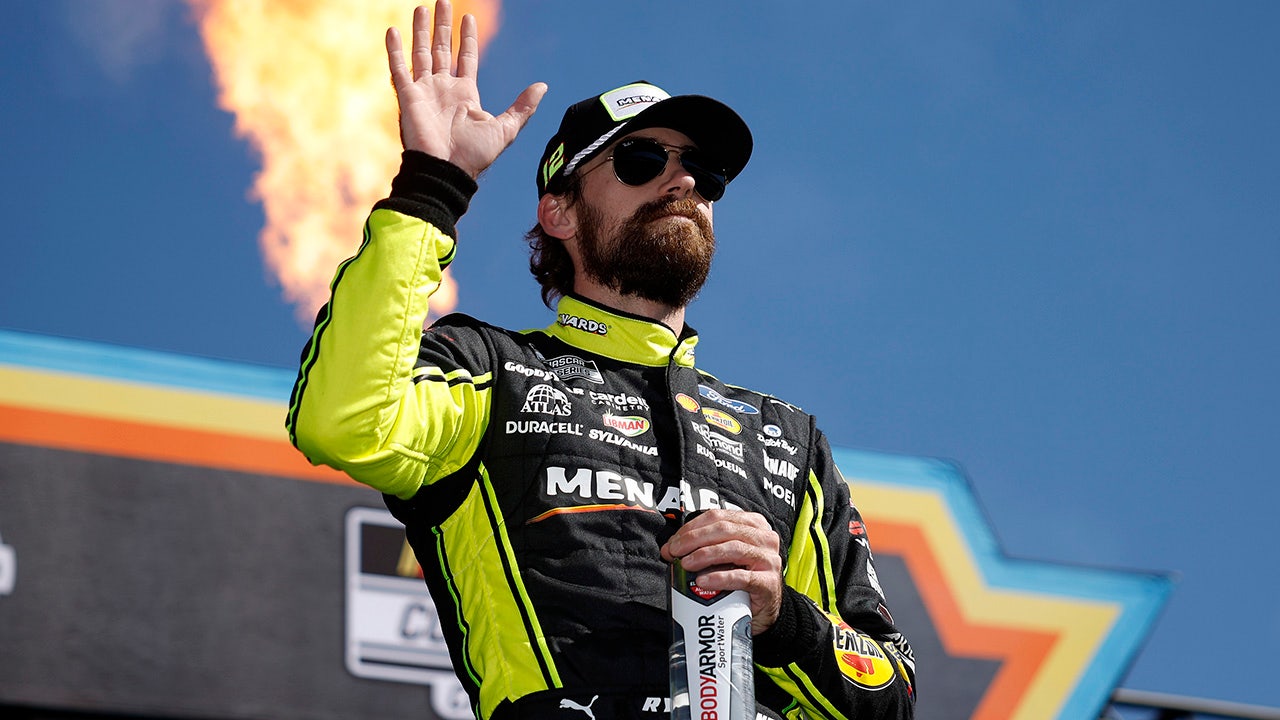
A crash at NASCAR’s All-Star Race, where no points are awarded, resulted in fists flying in the garage area.
Kyle Busch and Ricky Stenhouse Jr. got into a brawl after the No. 8 finished in 10th place in the race. The two were then seen exchanging words when Stenhouse threw a punch.
The two had to be separated as crews from both teams started to get after one another.
Ryan Blaney, driver of the No. 12 Menards/Dutch Boy Ford, waves to fans during driver intros prior to the NASCAR Cup Series Championship at Phoenix Raceway Nov. 5, 2023, in Avondale, Ariz. (James Gilbert/Getty Images)
Reigning Cup Series champion Ryan Blaney said he didn’t see the fight, but after he watched video, he remarked “it was a wild one.”
“Tempers flare all the time. No matter what you do, sometimes they boil over. You have disagreements, and sometimes hands are thrown,” Blaney said in a recent interview with Fox News Digital.
“Tensions are high. It’s just one of those things in sports. Sometimes, they boil over, and that’s what happens. Guys disagree, and emotions get the best of them. It was a wild one, that’s for sure.
“It’s hard to calm the adrenaline down when you’re running 200 miles an hour.”
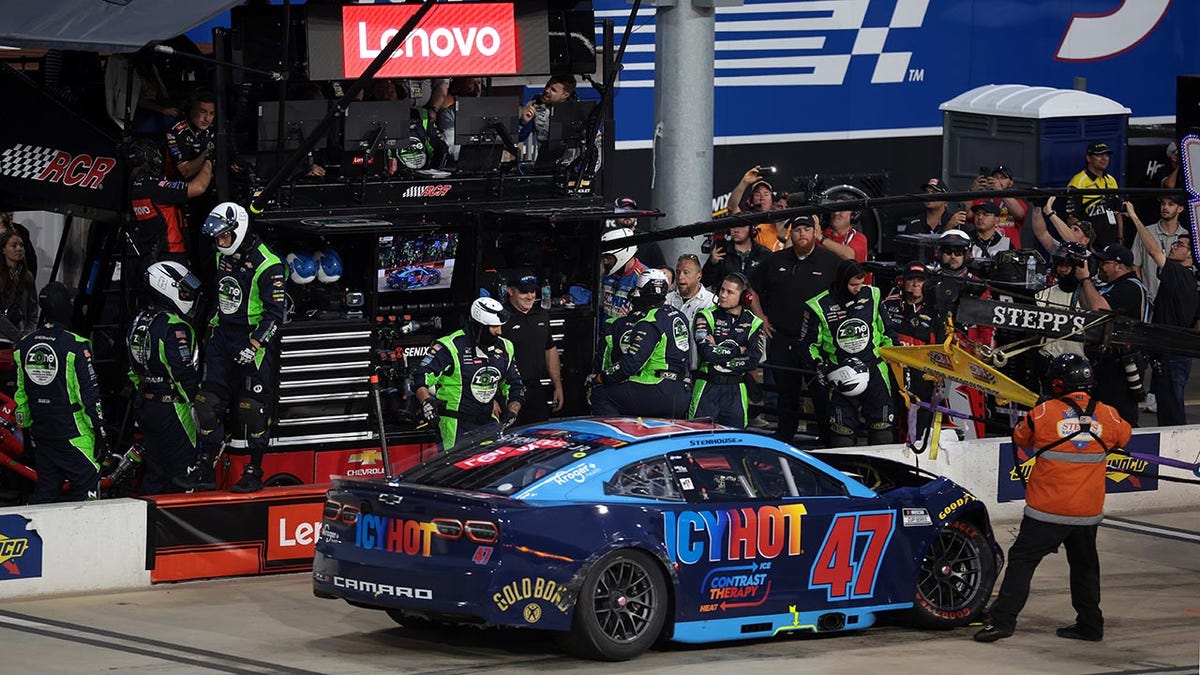
Ricky Stenhouse Jr., parks the No. 47 Kroger Health/Icy Hot Chevrolet in Kyle Busch’s pit area and speaks to the crew in the pit box after an on-track incident during the NASCAR Cup Series All-Star Race at North Wilkesboro Speedway May 19, 2024, in North Wilkesboro, N.C. (James Gilbert/Getty Images)
NASCAR DRIVER BELLY-FLOPS INTO MASSIVE FLOOD ON PIT ROAD AS RAIN POSTPONES RACE
There’s not much difference between altercations in NASCAR and any other sport, the 30-year-old says.
“I can’t relate to what other players go through in their sport, what’s maybe dirty or not,” Blaney said. “I’m sure you go to football, someone’s trying to get you low. That’s probably a no-no, and guys get ticked off about that. Racing’s kind of the same. You get intentionally wrecked, you’re gonna be pretty mad about that.
“Just like anything else, disagreements lead to people putting hands on people and makes some exciting TV. But, yeah, just like anything, you think you were wronged, you’re going to try to make it right.”
NASCAR fined Stenhouse $75,000 and suspended his father and two crew members for their involvement in the brawl. Busch and his teammates received no punishment.
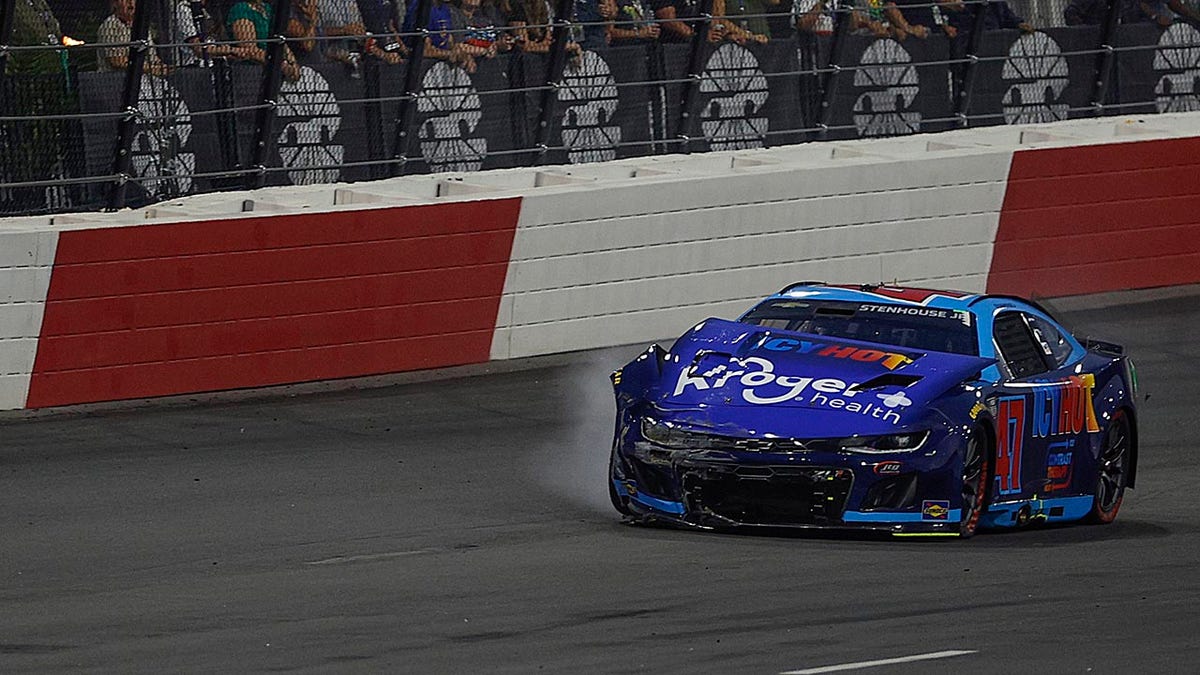
Ricky Stenhouse Jr., driver of the No. 47 Kroger Health/Icy Hot Chevrolet, exits the track after an incident during the NASCAR Cup Series All-Star Race at North Wilkesboro Speedway May 19, 2024, in North Wilkesboro, N.C. (Sean Gardner/Getty Images)
In a shouting match after the fight, Stenhouse threatened to wreck Busch this weekend at Charlotte. NASCAR is expected to meet with Stenhouse to warn that any retaliation on the track would likely result in more serious penalties for the JTG Daugherty Racing driver.
FOX Sports’ Bob Pockrass contributed to this report.
Follow Fox News Digital’s sports coverage on X, and subscribe to the Fox News Sports Huddle newsletter.
Sports
Plaschke: Caitlin Clark brings the magic during her Hollywood debut
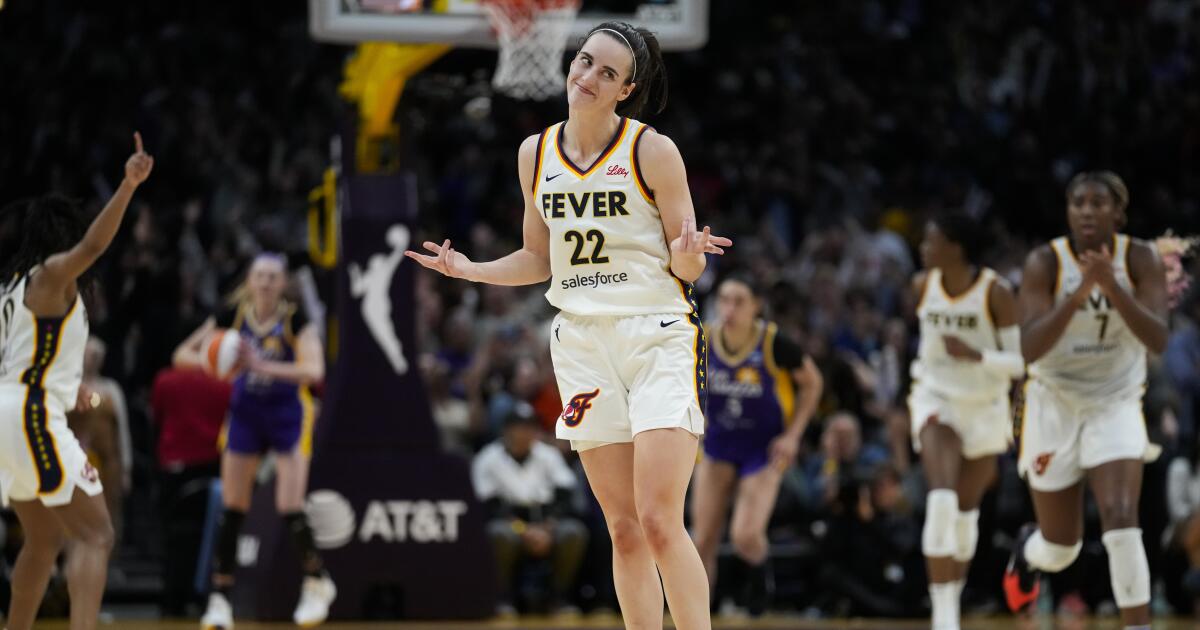
All night, bricks.
Then, boom.
All night, dreadful.
Then, dagger.
Caitlin Clark spent most of her first visit to Los Angeles stuck in terrible traffic Friday, stalling and swerving and slamming the brakes as her Indiana Fever team careened toward embarrassment.
Then, FasTrak.
Indiana Fever guard Caitlin Clark makes a 3-pointer during the second half of a win over the Sparks in Los Angeles Friday.
(Ashley Landis / Associated Press)
She really is unreal. She really is magic.
With 2:27 remaining and the Fever clinging to a three-point lead against the Sparks at Crypto.com Arena, Clark nailed her first three-pointer of the night, a deep and looping trey.
She spread out her arms. She stuck out her tongue. The sold-out building shook.
Then with 40 seconds remaining and the Fever clutching a two-point lead, she did it again, draining a deep rainbow three to clinch a 78-73 victory, earn her first WNBA win and cement two priceless memories for those lucky enough to bear witness.
As Clark walked across the court after the final buzzer, the crowd continued to scream as if she was a rock star. When she later walked into the postgame news conference, she bore the swaggering smile of a baller.
In her sixth WNBA game, after five losses and countless struggles and heaps of criticism, the collegiate icon has perhaps rediscovered herself.
”Nights like tonight remind me of why I love playing basketball, why I started playing basketball,” Clark said. “Because you get a win and you walk off the court and there’s so many young kids just screaming your name and love getting to watch you.”
If you were wondering how a 22-year-old kid from Iowa became the most celebrated athlete in America, this is why. This was how. This was it.
This was what the roars are about. This is what 19,103 people came to see. This is what has pumped new life into a WNBA that is regularly setting attendance and viewership records. This is what has transformed women’s basketball everywhere.
Those two shots, forged from nine straight misses, nailed by a woman wearing Kobe Bryant shoes and determined to honor Kobe Bryant’s memory.
“Kobe’s the best, man,” she said. “That’s the mentality you have to have … you want those moments, you embrace those moments.”
For the longest time Friday, it seemed like those moments would again elude her. As the Sparks grabbed an 11-point halftime lead and continued to roll early in the fourth quarter, Clark was getting pushed all over the court by the likes of Sparks guard Layshia Clarendon and frequent Sparks’ double-teams.
You have to see the 6-foot Clark in person to realize the extent of her disadvantage. She’s small. She’s slight. It’s startling to watch this college giant get so easily smothered by the bigger and more aggressive WNBA veterans.
She made two of her first 12 shots. She showed off her incredible court vision with several pretty assists and she grabbed a bunch of rebounds, but the best part of her game was missing.
Then, just in time, the greatest scorer in college basketball history found herself.
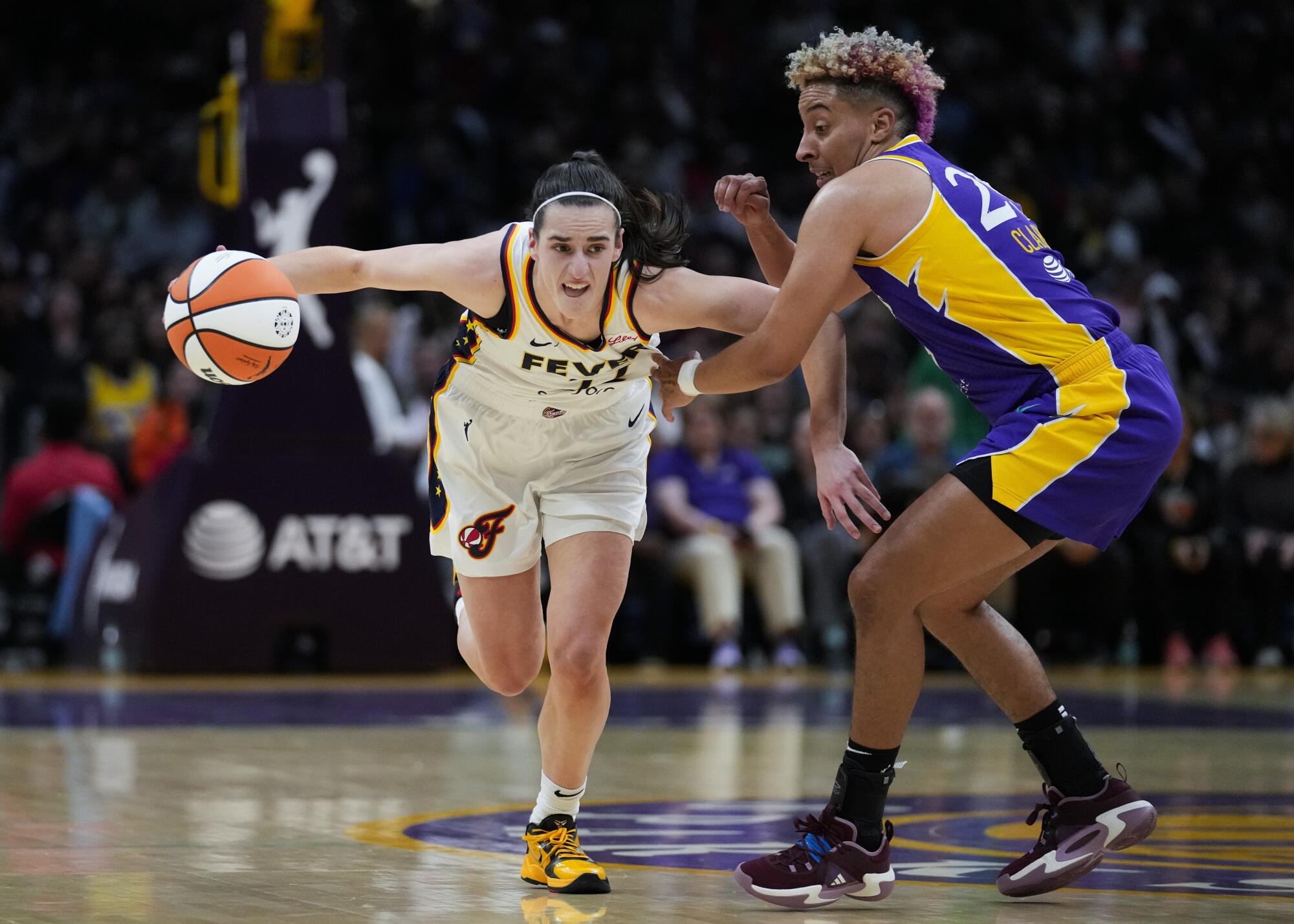
Sparks guard Layshia Clarendon, right, guards Indiana Fever guard Caitlin Clark (22) in Los Angeles Friday.
(Ashley Landis / Associated Press)
“I don’t know if it’s a good thing or a bad thing, but I seriously think every shot is going to go in,” Clark said. “I want to take those shots at the end of the game. It’s like a mindset and confidence you have to have about yourself.”
What does that confidence sound like? Listen to what she said after that first trey drained.
“I went to the bench after and I was like, ‘I was due. They had to go in, I had missed so many, it was time to go in,” she said.
She finished with 11 points, 10 rebounds, eight assists and a cool compliment from the beneficiary of several of her passes.
“Katlin’s vision is second to none,” said Temi Fagbenle, who scored 17. “I love, I love love playing with her. I know I’m open, but I don’t know if she knows I’m open, then she knows and I’m like, ‘Oh my gosh, she knew!’”
“She’s handling it unbelievable. … She’s handling it with such poise. … She shows a level of maturity for a 22-year-old that is unbelievable. … She’s special, she’s different.”
— Fever coach Christie Sides on Caitlin Clark
All of which will perhaps convince critics to take a break from the incessant sniping that began with Clark’s 10-turnover debut.
The verdict that she was a bust — after only five games — was so pervasive that it ran her and teammate Aliyah Boston off social media. Many fans seemingly forgot that she was still a rookie, and that she played for a team so outmatched it had just earned the No. 1 draft pick during consecutive seasons.
“People don’t want to give us much grace,” Clark said. “They expect us to be world champions on Day 1. That’s not realistic. There’s a learning curve here.”
She’s been frequently crushed by that curve, yet she has continued to move gracefully beneath America’s hottest sports spotlight, taking every question, giving refreshing and honest interviews while never criticizing anyone but herself.
If you listen to her coach, those two Friday night shots will be remembered as just part of her inspiration.
“She’s handling it unbelievable. … She’s handling it with such poise. … She shows a level of maturity for a 22-year-old that is unbelievable. … She’s special, she’s different,” Fever coach Christie Sides said of Clark. “The bullets are just coming, every day … we’re scrutinized for everything.”
Clark admitted that the attention has been draining,
“Honestly, I feel like I talk to the media more than I get to talk to my own family, which is really kind of sad in a way,” she said. “It’s a lot for somebody who is 22 years old. It can be tough at times.”
And then, as another memorable Friday night in Hollywood proved, it can be wonderful.
“I was excited to come here and play in this place,” Caitlin Clark said. “Obviously there is so much history in this building.”
And now there’s more.
-

 Politics1 week ago
Politics1 week agoVulnerable Dem incumbents move to the center in key swing states as Biden panders to far-left base
-

 World1 week ago
World1 week ago‘Monstrous crime’: World reacts to attack on Slovakia’s prime minister
-

 News1 week ago
News1 week agoHow a migrant aid group got caught up in a right-wing social media thread : Consider This from NPR
-

 Politics1 week ago
Politics1 week agoSouthern border migrant encounters decrease slightly but gotaways still surge under Biden
-

 World1 week ago
World1 week agoSlovakia PM Robert Fico in ‘very serious’ condition after being shot
-

 Movie Reviews1 week ago
Movie Reviews1 week agoGuruvayoor Ambalanadayil movie review: This Prithviraj Sukumaran, Basil Joseph-starrer is a total laugh riot
-

 Movie Reviews1 week ago
Movie Reviews1 week agoIs Coppola’s $120M ‘Megalopolis’ ‘bafflingly shallow’ or ‘remarkably sincere’? Critics can’t tell
-

 World1 week ago
World1 week agoTaiwan grapples with divisive history as new president prepares for power




